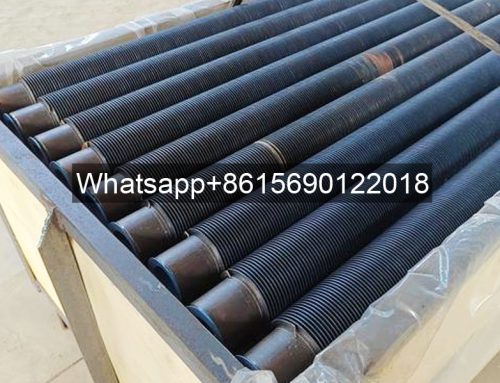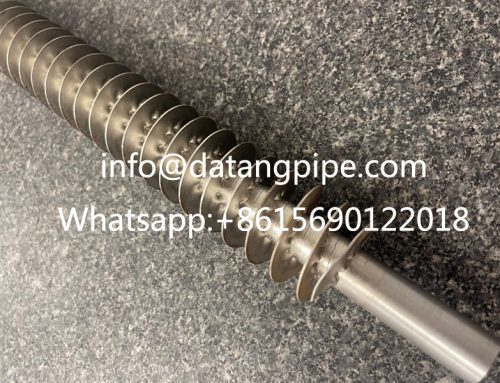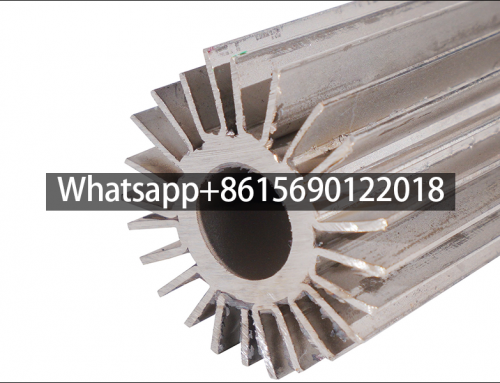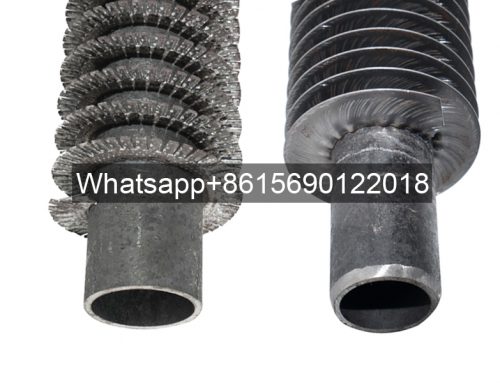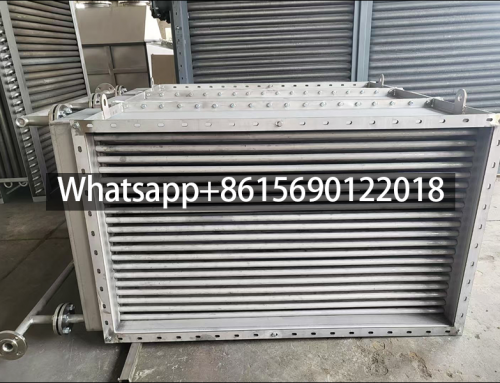Laser Welded Spiral Finned Tubes: Technological Advancements in Industrial Heat Transfer
Laser Welded Spiral Finned Tubes: Technological Advancements in Industrial Heat Transfer
Laser-welded spiral finned tubes represent a breakthrough in heat exchanger technology, achieving metallurgical bonding between fins and base tubes through high-energy-density laser beams. This process creates molecular-level integration at the root junction, substantially enhancing structural integrity and thermal performance.
1. Metallurgical Bonding Technology
Unlike traditional high-frequency welding or mechanical expansion, laser welding offers:
- Zero Contact Stress: Eliminates root stress concentration found in rolled fin tubes
- Inert Gas Shielding: Prevents oxidation and eliminates flux contamination
- Multi-material Compatibility: Enables carbon steel/stainless steel bimetallic combinations
2. Enhanced Thermal Efficiency
Optimized fin geometry dramatically increases heat transfer surface area:
| Tube Type | Heat Transfer Area Multiplier | Fin Detachment Rate (<0.3%) |
|---|---|---|
| Bare Tube | 1x (Baseline) | N/A |
| Rolled Finned Tube | 6-9x | >2% |
| Laser-Welded Tube | 8-12x | <0.3% |
Continuous spiral fin configuration improves heat exchange efficiency by 30% over conventional rolled fins.
3. Structural Reliability
Rigorous testing confirms exceptional durability:
- Thermal Cycling Resistance: <0.3% fin detachment after 5,000 thermal shock cycles
- Vibration Tolerance: Maintains integrity in high-flow environments like FCC units
- Pressure Retention: Bimetallic tubes withstand 6.0MPa in offshore applications
4. Environmental & Economic Benefits
| Parameter | Improvement | Verification Case |
|---|---|---|
| Energy Consumption | ↓35% vs brazing | Inert gas welding process |
| CO₂ Reduction | 4,200 tons/year | Petrochemical WHRU application |
| Flue Gas Temperature | 280℃→140℃ | Verified in refinery operations |
5. Advanced Applications
- Offshore Platforms: Carbon steel base + stainless steel fins for corrosion resistance
- Acid Gas Processing: Duplex steel tubes handling H₂S concentrations >5,000ppm
- Waste Heat Recovery: Aluminum fins on carbon steel for low-temperature systems
Future Focus: Emerging developments include:
- AI-controlled welding parameter optimization
- Nanocoated fins for fouling resistance
- Modular designs for rapid field replacement
The integration of laser welding technology has transformed spiral finned tubes into high-reliability, high-efficiency components essential for extreme industrial environments, balancing operational safety with sustainability goals.
Characteristics of laser welded spiral finned tubes
Laser welded spiral finned tubes use precision metallurgical bonding technology to increase the heat exchange area by 8-12 times, with a thermal cycle test shedding rate of less than 0.3%, and an annual reduction of 4,200 tons of carbon dioxide emissions. They have been expanded to high-end fields such as offshore platforms.
Laser welded spiral finned tubes have shown significant application value in the field of industrial heat transfer due to their unique process advantages.
Compared with traditional high-frequency welding or extrusion molding processes, laser welding uses a high-energy-density laser beam to achieve metallurgical bonding between the base tube and the fin. This precision welding technology allows the fin root to form a molecular-level bond with the tube wall, which has been verified by a third-party testing agency.
In terms of energy efficiency performance of steel finned tube radiators, the continuous spiral fin structure formed by the laser welding process increases the heat exchange area by 8-12 times compared to light tubes.
It is about 30% higher than ordinary rolled finned tubes. The unique non-contact welding technology avoids the stress concentration problem at the root of the fin caused by the traditional process. After 5,000 thermal cycle tests, the fin shedding rate is less than 0.3%, which significantly extends the equipment maintenance cycle.
In terms of environmental protection, this technology uses inert gas protection welding, which reduces energy consumption by 35% compared with the brazing process and completely eliminates flux pollution.
An application case of a petrochemical enterprise shows that the use of such finned tube waste heat recovery devices reduces the exhaust temperature from 280°C to 140°C, reducing carbon dioxide emissions by 4,200 tons per year.
At present, this technology has been expanded to the field of bimetallic composite pipes. Through the laser cladding process, stainless steel fins are welded on the carbon steel pipe substrate, which not only maintains the pressure bearing capacity but also improves the corrosion resistance, and achieves a breakthrough application in offshore platform heat exchangers.


